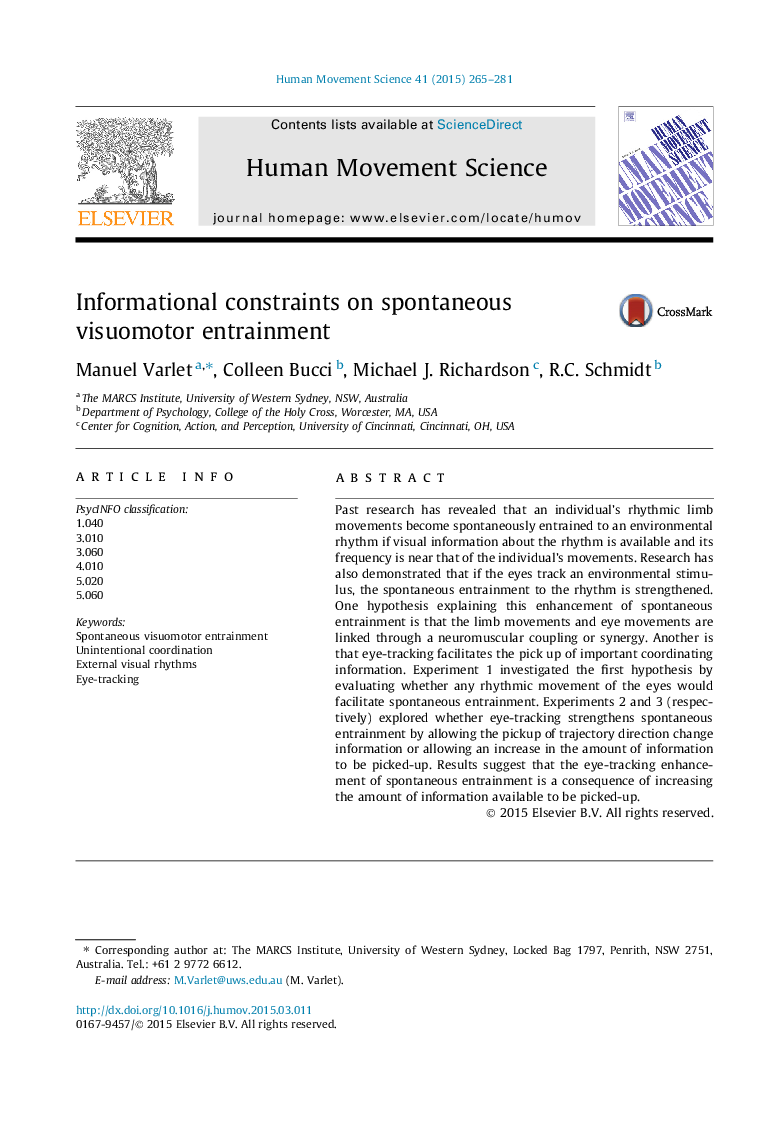| Article ID | Journal | Published Year | Pages | File Type |
|---|---|---|---|---|
| 7292047 | Human Movement Science | 2015 | 17 Pages |
Abstract
Past research has revealed that an individual's rhythmic limb movements become spontaneously entrained to an environmental rhythm if visual information about the rhythm is available and its frequency is near that of the individual's movements. Research has also demonstrated that if the eyes track an environmental stimulus, the spontaneous entrainment to the rhythm is strengthened. One hypothesis explaining this enhancement of spontaneous entrainment is that the limb movements and eye movements are linked through a neuromuscular coupling or synergy. Another is that eye-tracking facilitates the pick up of important coordinating information. Experiment 1 investigated the first hypothesis by evaluating whether any rhythmic movement of the eyes would facilitate spontaneous entrainment. Experiments 2 and 3 (respectively) explored whether eye-tracking strengthens spontaneous entrainment by allowing the pickup of trajectory direction change information or allowing an increase in the amount of information to be picked-up. Results suggest that the eye-tracking enhancement of spontaneous entrainment is a consequence of increasing the amount of information available to be picked-up.
Keywords
Related Topics
Life Sciences
Neuroscience
Cognitive Neuroscience
Authors
Manuel Varlet, Colleen Bucci, Michael J. Richardson, R.C. Schmidt,
